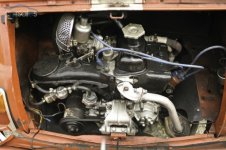PointFiveO
Member
- Joined
- Mar 24, 2012
- Messages
- 71
- Points
- 70
Hi all, I have a 650cc engined 500. The engine has a 'sports' camshaft (not sure of the profile) and aftermarket exhaust and is running 123 electronic ignition. It has recently been off the road for and engine rebuild and also the cylinder head is having some polishing and porting done and possible larger intake valves installed. A bit further down the line I would like to upgrade the carburetor to compliment the other upgrades. I'm not going to go wild and although I would love a dellorto fzd I can't stretch to the cost so have narrowed it down to a choice between a weber 30 dic or a weber 30 or 32 iba. I believe the former is a twin choke and the latter 2 are single chokes. Anyway I was hoping for advice or opinions as to which would be best for my engine. If anbody has experience of either maybe you could let me know what your experience has been. Also I was wondering if anybody has been in contact with Middle Barton Garage in England as I believe they have a wealth of experience and are willing to offer advice over the phone or email.
Thanks,
Colm.
Thanks,
Colm.





